Sustainable Mobility Matters—Fall 2024
This quarterly newsletter highlights recent projects, partnerships, and publications related to NREL's sustainable mobility research.
Subscribe to receive this newsletter via email.
NREL's Sustainability Vision Drives Our Efforts To Create a Clean Transportation Future
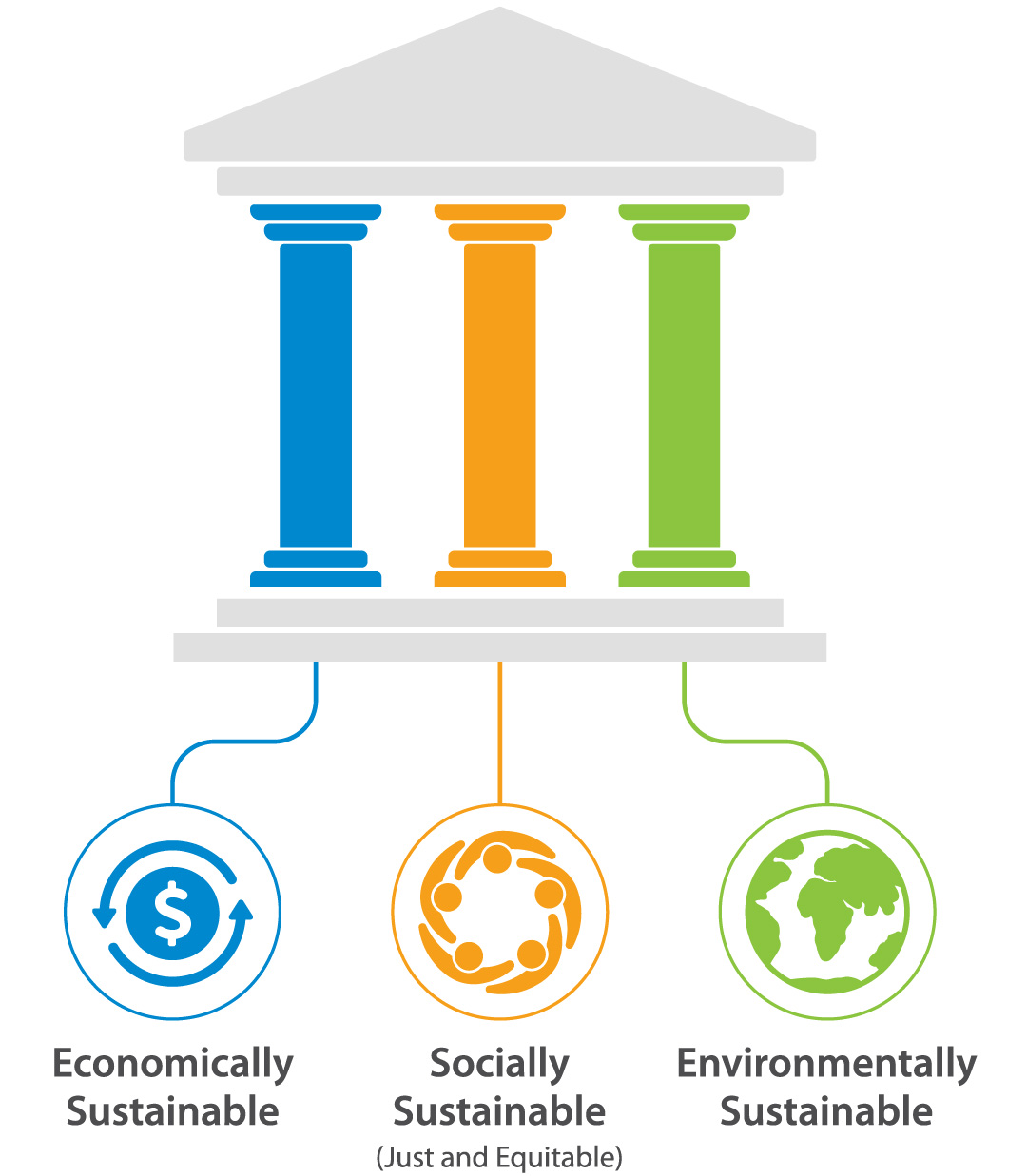
Our vision for a sustainable transportation future. Image by Elizabeth Stone, NREL
What do we mean when we say "sustainability?"
For most people, thinking about sustainability brings up ideas about recycling plastic, reducing pollution, and saving endangered species. These are all going to be critical parts of "saving the planet"—another common idea that comes up when thinking about sustainability. But they also lack specificity. What is the larger strategy? How do they intersect to reach a wider goal?
Here in NREL's Center for Integrated Mobility Sciences, we've spent decades honing our specific, actionable decarbonization vision for a sustainable transportation future. For us, that approach has three pillars. It means the transportation of the future is environmentally, economically, and socially sustainable: good for the planet, supportive of long-term economic growth, and just and equitable for all.
You can see our sustainability vision crossing and connecting every area our researchers touch. We're driving environmental sustainability by designing more efficient power electronics components and streamlining early-stage battery manufacturing. We're pursuing economic sustainability by deploying new, least-cost hydrogen infrastructure and guiding cost-effective transitions to decarbonized fleets. And our push for social sustainability is helping to connect communities with resources that can bolster their energy resilience for decades to come.
Our vision for sustainable transportation calls for nothing short of a transformation of the way we move and connect people, goods, and systems. It's not a simple vision, but it's clear. And it will guide us into the next decades of progress for a clean transportation future, for all.
Drive on,

Chris Gearhart
Director, NREL's Center for Integrated Mobility Sciences
Research News Highlights

NREL Surveys the State of Smart Charge Management
Researchers from NREL and Lawrence Berkeley National Laboratory broke new ground by surveying the national state of smart charge management across the United States. Their findings, drawn from a study of more than 100 managed charging programs nationwide, can now chart a path to addressing major gaps in smart charge management knowledge, practices, and technology levels.

U.S. Army Taps NREL for Next-Generation Power Inverters
To transform U.S. military ground combat vehicles, NREL has been selected to redesign a critical component: the traction inverter, which controls the flow of electricity between a vehicle's battery, motor, and drivetrain. The new silicon-carbide-based propulsion system will double the range of Army vehicles with a footprint four times smaller than its predecessors.
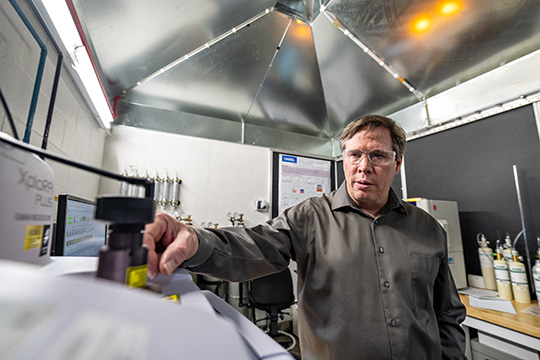
Starting With Safety: NREL Approach Streamlines Early-Stage Battery Development
As demand for lithium-ion batteries continues to grow, NREL experts are dedicated to developing fresh approaches to identify potential hazards and accelerate nationwide battery safety research. A recent study published in Nature Communications offers a new technique for predicting the variability of thermal runaway behavior, drawing from prior NREL research that found correlations between the cell's ejected mass and heat generation.

NREL's New Commercial Vehicle Cost of Ownership Tool Is Best in Class—and Free of Charge
While commercial electric vehicles (EVs) are more cost-effective over their lifetimes than their diesel counterparts, finding an EV's true total cost of ownership is notoriously difficult. The release of NREL's open-source T3CO: Transportation Technology Total Cost of Ownership tool brings fleets, manufacturers, and researchers access to the most sophisticated, free vehicle cost analysis tool available.

Soft Cost Analysis of Electric Vehicle Charging Infrastructure Informs Transition to an Electric Fleet
A new project led by NREL aims to reduce the "soft costs" of EV charging infrastructure installation. These costs—which include permitting, administration, and labor—sometimes exceed hardware expenses. By analyzing more than 4,000 invoices and engaging stakeholders, NREL established a baseline of soft costs that will be tracked over time and used to define research, development, and deployment targets to reduce costs, streamline installation processes, and create cost-effective solutions, much like previous NREL-led solar soft cost work. The project will accelerate the deployment of a national EV charging network.

Decades of NREL Research Spur Electric Vehicle Revolution
Building on decades of innovative research and development amid increasing concerns about greenhouse gas emissions, NREL is developing cutting-edge tools and producing groundbreaking research to study zero-emission vehicles (ZEVs) and related infrastructure. From world-class resources such as the EVI-X suite of EV charging infrastructure analysis tools, which helps guide charging infrastructure deployment, to the TEMPO™: Transportation Energy & Mobility Pathway Options model for exploring pathways for achieving long-term climate goals, NREL is at the forefront of transportation decarbonization.
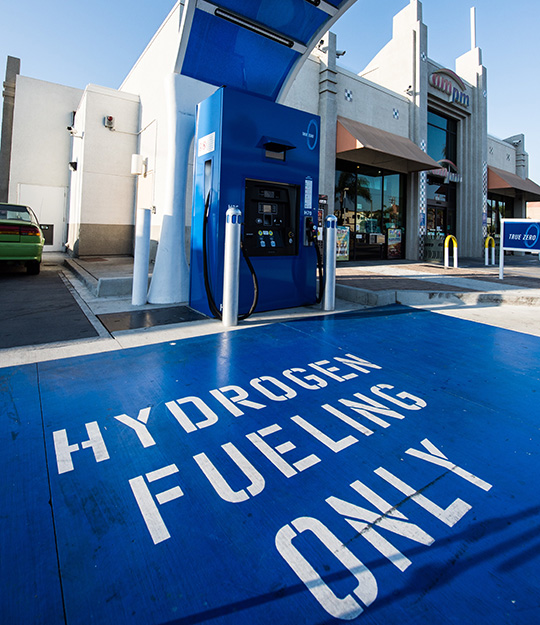
NREL Model Fast-Tracks Hydrogen Supply Chain Infrastructure Deployment
Realizing the potential of clean hydrogen as a transportation fuel will require successful widespread deployment of hydrogen fueling infrastructure. NREL's SERA: Scenario Evaluation and Regionalization Analysis model optimizes hydrogen infrastructure build-outs necessary to meet the growing needs of an emerging, dynamic market at a geographic and temporal level. Recent upgrades enhance its efficiency and expand its capabilities for evaluating diverse infrastructure scenarios, including transportation and non-transportation applications.
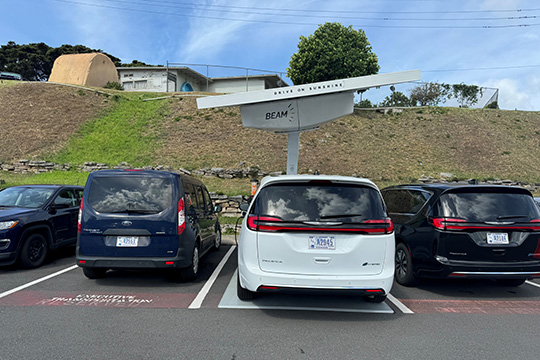
NREL Experts Accelerate Electrification of Department of Defense Nontactical Fleets
NREL's vehicle and infrastructure deployment experts are helping federal agencies such as the Department of Defense (DOD) transition its nontactical vehicle fleets to EVs. The NREL team is helping DOD and its agencies increase EV acquisitions and create charging infrastructure plans. With funding from DOD, NREL has developed marquee tools that, in future iterations, will allow any stakeholder to plan for commercial charging stations.
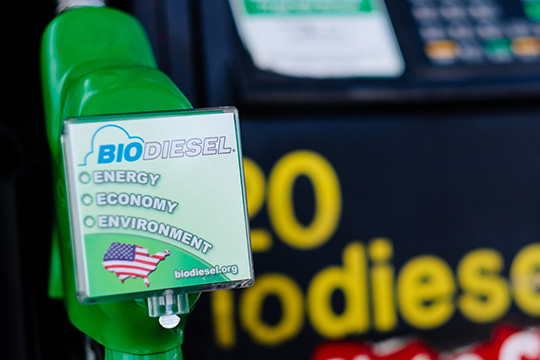
NREL Research Points Path to Higher Blends of Biodiesel
Heavy-duty and off-road transportation is expected to continue requiring liquid fuels even as electrification of smaller vehicles ramps up. These fuels will need to have low net greenhouse gas emissions—such as biodiesel and renewable diesel—and be compatible with existing engines. However, a detailed understanding about the properties of biodiesel blended at levels above 20% is lacking. NREL researchers identified the barriers preventing greater blends of biomass-based diesel fuel into petroleum, along with strategies to overcome them.
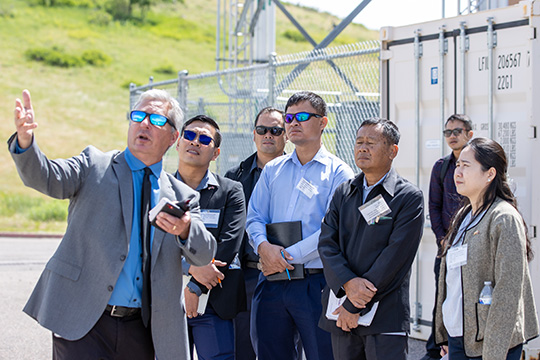
Lao Delegates Get Firsthand Look at State-of-the-Art Electric Vehicle Technologies—and So Much More
The Lao People's Democratic Republic (PDR) is creating an EV roadmap and planning to further develop its EV infrastructure. To support Lao PDR's sustainable transportation goals, NREL partnered with the U.S. Agency for International Development to host a delegation of 10 Lao PDR government technical leads for a 7-day study tour. Transportation researchers worked with the delegates to plan for transitioning their bus and official ministerial fleets and developed a customized platform powered by NREL's OpenPATH™: Open Platform for Agile Trip Heuristics that Lao PDR could use to collect gender-disaggregated travel data to inform strategies for siting public EV charging.

Sreekant Narumanchi Included in Latest Cohort of NREL's Distinguished Research Staff
Sreekant Narumanchi's expertise in heat transfer has been vital to the acceleration of EVs and their intricate components. Now, the leader of NREL's power electronics research group has been recognized with a prestigious honor: membership among the laboratory's Distinguished Members of Research Staff.
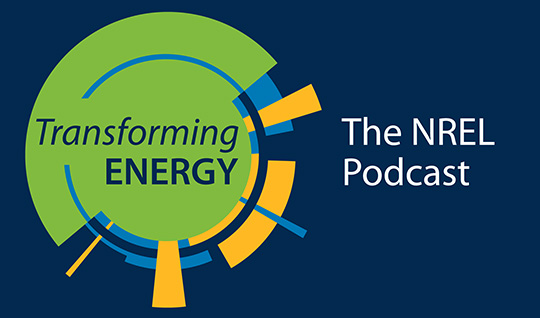
NREL Podcast Episode Explores the Laboratory's Sustainable Aviation Research
An episode of NREL's podcast takes a deep dive into NREL's sustainable aviation research. The federal government and aviation industry have goals to decarbonize aviation by 2050, but how can we get there? Researcher Scott Cary shares how NREL is identifying pathways to a more sustainable aviation sector. Additionally, Dave Ulane, director of the Colorado Division of Aeronautics, and Erin Cooke, sustainability and resilience director at San Francisco International Airport, provide industry expertise.
Get To Know Our Team: Lauren Spath Luhring

A conversation with Lauren Spath Luhring, who leads NREL's Transportation Applications and Data Analysis group.
What does your work focus on?
My team's work focuses on deployment and accessibility. We work closely with transportation researchers to make the data they collect and the analysis they perform accessible to people who visit NREL's websites without background, expertise, or resources to build their own data. We work to get relevant information about transportation into the hands of people who need it quickly through informational websites and web tools and by making data available via API.
What single mobility challenge would you say we need to prioritize in the next 5 years?
I would say equity and accessibility. Technology is moving fast, but opportunities for usage and engagement are still somewhat limited by factors including cost, location and availability, and lack of information.
Can you share a defining moment in your research career?
Seeing the impact of the U.S. Department of Energy's (DOE's) EVI-Pro Lite has been incredible. The web-based tool allows U.S. cities and states to estimate their charging infrastructure needs and the associated power demands on the grid. It is one of the most frequently cited and used tools by researchers outside of NREL. Seeing how we could take one of NREL's most sought-after capabilities and turn it into an easy-to-use web tool so that interested users can access this model without NREL's help was a game changer.
What piece of research are you most proud of conducting?
Building EVI-Pro Lite and the subsequent "lite" tools that we've deployed is special to me. It really demonstrates how collaboration makes our work even more impactful by getting NREL's capabilities out from behind the "research wall" and into the hands of everyday people. All of this work is funded by taxpayer dollars, and it is important to me that the results don't just live in the walls of academia or the lab.
Must Reads
Biofuels Can Power the Biggest Ships: Five Things To Know About Expanding Their Use
Every year, 80% of the world's goods are hauled between continents on cargo ships.
The industry uses an estimated 2.5 billion barrels of fuel annually, primarily heavy
fuel oil. In a Biofuels, Bioproducts and Biorefining journal article, NREL researchers analyzed newer, less polluting marine biofuels. Read five key takeaways from the study in a DOE article authored by NREL's Zia Abdullah.
Standardized API Protocol Improves the Public Electric Vehicle Charging Experience
EV charging providers who receive certain federal infrastructure grants must deploy
and maintain an API to enable access to information about charging stations they operate.
Check out the new standardized API protocol from the Joint Office of Energy and Transportation with recommendations for deploying
an API to enable effective communication with consumers about available charging stations
and help consumers make informed decisions about trip planning.
Online Guide Provides Central Resource for School Bus Electrification
Electric school buses can help reduce children's exposure to air pollution, as well
as lower fleet operational costs. Explore the online School Bus Electrification Center at DOE's Alternative Fuels Data Center website for user-friendly, accessible guidance
for school bus electrification. The guide provides a step-by-step process to help
school bus fleets plan for and deploy electric school buses in a strategic way to
meet long-term electrification goals.
NREL and Bioenergy Technologies Office Release Sustainable Aviation Fuel State-of-Industry
Report
NREL, in partnership with DOE's Bioenergy Technologies Office, released the first two parts of the Sustainable Aviation Fuel (SAF) State-of-Industry Report. The report focuses on how to achieve the near-term fuel production goals set forth
in DOE's SAF Grand Challenge. The first two parts cover the state of the SAF production process and the specific
hydroprocessed esters and fatty acids fuel production pathway.
Report Explores How Electric Vehicle Charger Availability Impacts Electric Vehicle
Adoption
Public EV charging is critical to enable EV adoption for people without access to
home charging. Learn how NREL researchers explored the relationships between EV charging
station reliability, station resilience, grid resilience, and EV adoption in the report
Impact of Electric Vehicle Charging Station Reliability, Resilience, and Location on Electric Vehicle Adoption.
Improving Understanding of Thermal Runaway To Improve Battery Safety
Lithium-ion batteries are used in EVs, energy storage power stations, and other applications.
Thermal runaway, an uncontrollable rise in battery temperature, can cause fires and
explosions—and has yet to be fully understood. To learn how recent research uncovered
valuable insights for thermal runaway modeling and provided design guidance for safer
next-generation battery cells, read Dynamics of Intra-Cell Thermal Front Propagation in Lithium-Ion Battery Safety Issues, Advanced Energy Materials.
Did You Know?
The aviation sector accounts for nearly 8% of all transportation-related greenhouse gas emissions, which also impact air quality in and around airports. Identifying solutions to electrify airport operations, and prioritizing energy efficiency, will be crucial to decarbonizing the U.S. transportation system through sustainable and clean energy sources. The NREL-led Athena ZEV project, funded by DOE's Vehicle Technologies Office, aims to identify technologies that airports can use to electrify operations and to estimate energy needs so that airports—such as Dallas-Fort Worth International Airport—can plan for future demand. Watch the video to learn more about how Athena ZEV could have a big impact on aviation sustainability.
In the News
Shock Wave: How the Electric Grid Will Prepare for Mass EV Adoption
MotorTrend interviews Andrew Meintz
Utility companies are gearing up for increased demand on the electric grid as more
people adopt and charge EVs. Bidirectional vehicle-to-grid technology could reduce
the pressure, taking advantage of the potential of EVs to store energy when not in
use—and to send power back to the grid when needed.
Calendar Aging of Next Generation Batteries: A Trivial Issue or the Final Frontier?
Ankit Verma writes for Intercalation Station
Current methods for measuring the calendar aging of graphite-based lithium-ion batteries
are time-consuming and resource-intensive. To support the rapid development of next-generation
lithium-ion batteries with different anodes, researchers need faster and more efficient
methods to measure calendar life.
A Road Trip on the Hydrogen Highway [podcast]
The Verge interviews Keith Wipke
In 2004, California Governor Arnold Schwarzenegger announced plans for a "hydrogen highway" to support hydrogen fuel cell vehicles. Twenty years later, reporters at The Verge took a road trip down California's coast to learn what hydrogen fuel cells are, what became of the "hydrogen highway," and what the future holds for hydrogen-powered vehicles.
Tweed New Haven Becomes First Commercial Airport To Work With NASA on Renewable Energy
for Planes
New Haven Register quotes Nick Grue
NASA and NREL have chosen Tweed New Haven Airport as the first commercial airport
in the United States to join the Airports as Energy Nodes project. The partners aim
to collect data to understand Tweed's current and future operations and energy needs
to support future electric aircraft and generate energy on-site.
25 New Communities Join Energy Transitions Initiative Partnership Project
DOE's Energy Transitions Initiative Partnership Project (ETIPP) welcomed 25 new communities—its largest cohort yet—on Sept. 10, 2024. Over the next 2 years, these communities will receive technical assistance from national laboratories, including NREL; backing from regional partner organizations; and up to $50,000 to support projects focused on a variety of renewable energy solutions. ETIPP is providing support on transportation-related projects, including deploying EV charging infrastructure and electrified transit, and other solutions that fit the communities' unique geographical, technical, and cultural needs.
Share
Last Updated Dec. 24, 2025
